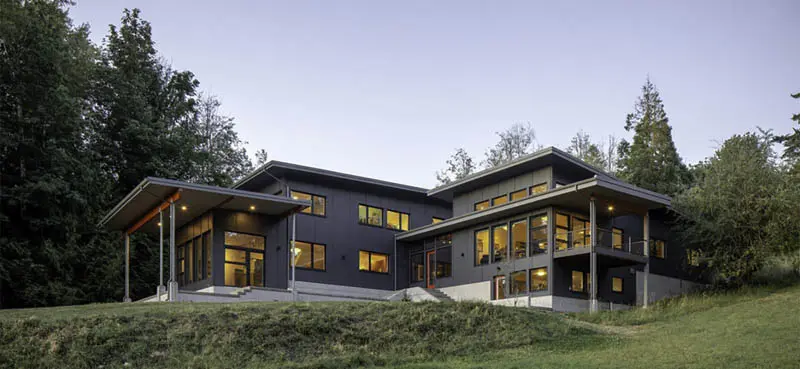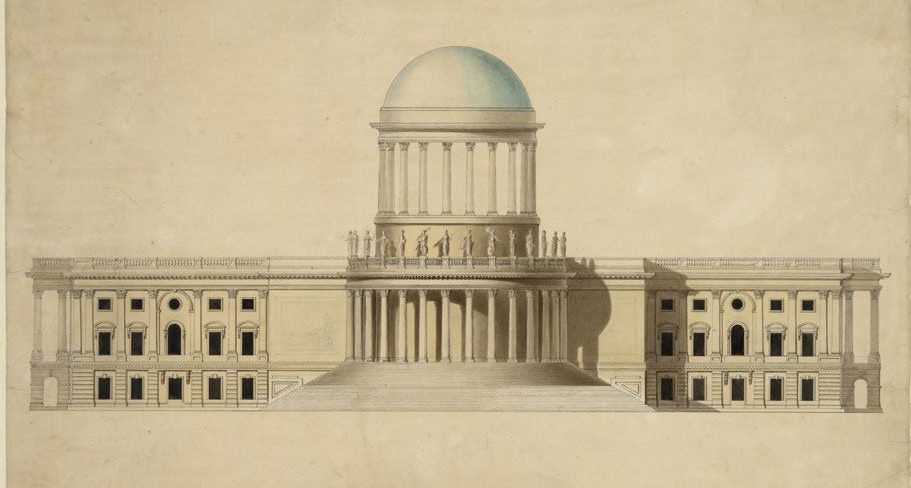What is an Interior Architecture Dissertation?
An interior architecture dissertation is a long essay that students write to complete their degree in interior architecture. It involves detailed research and analysis on a specific topic related to interior design and architecture. This type of dissertation helps students explore complex ideas and present their findings in a structured way.
In an interior architecture dissertation, students often choose a topic that interests them and is relevant to the field. They conduct research, analyze data, and draw conclusions based on their findings. This process helps them develop critical thinking and writing skills while contributing new knowledge to the field of interior architecture.
Why are Interior Architecture Dissertation Topics Important?
Choosing the right topic for an interior architecture dissertation is crucial for several reasons:
- Focus: A good topic narrows down the research to a specific area within interior architecture, making the study more manageable and focused.
- Relevance: Interesting topics keep students engaged and motivated throughout the research process. It ensures that the study is relevant and contributes to the field.
- Originality: Unique and original topics can lead to new insights and advancements in interior architecture, making the dissertation more valuable.
By selecting a relevant and engaging topic, students can produce high-quality work that showcases their expertise and contributes to the academic community.
Writing Tips for Interior Architecture Dissertation
Writing an interior architecture dissertation can be challenging, but following these tips can help make the process smoother:
- Choose a Clear Topic: Pick a topic that is specific, relevant, and interesting. A clear topic will help guide your research and writing.
- Conduct Thorough Research: Gather information from reliable sources, such as academic journals, books, and interviews with experts. Ensure that your research is up-to-date and relevant.
- Create an Outline: Organize your thoughts and research findings into a structured outline. This will help you write a coherent and logical dissertation.
- Write Clearly and Concisely: Use simple language and avoid jargon. Make your writing easy to understand and follow.
- Edit and Revise: After completing your dissertation, take time to revise and edit it. Check for errors in grammar, spelling, and formatting.
By following these tips, you can produce a well-written and impactful interior architecture dissertation.
Dissertation Topics Brief Service
At dissertation-help.co.uk, we offer a comprehensive Dissertation Topics Brief Service to help you select a suitable dissertation topic. Our expert writers can help you generate ideas and outline a detailed topic brief of 500 words. This service ensures that you are headed in the right direction for your dissertation, with a clear and focused topic that meets academic standards.
Download Sample Dissertations Pdf
Before you start working on your own dissertation, it’s helpful to take a look at some sample dissertations. Our collection of sample dissertations covers a wide range of civil law topics and can give you a better understanding of how to structure and write your own dissertation.
You can download free dissertation samples and topic briefs to get an idea of how to approach your topic and craft an engaging dissertation. This can serve as inspiration and guidance throughout your research process.
List of Top 99 Interior Architecture Dissertation Topics
Here is a list of 99+ dissertation topics related to interior architecture. These topics cover a wide range of ideas and can help inspire your own research:
Sustainable and Green Design
- Sustainable Design in Interior Architecture
- Green Building Practices in Interior Design
- Sustainable Materials in Interior Architecture
- Designing for Sustainable Living
- The Use of Green Walls in Interior Architecture
- The Use of Recycled Materials in Interior Architecture
- Designing for Energy Efficiency in Interior Spaces
- The Influence of Biophilic Design on Wellbeing
Psychology and Human Behavior in Interior Spaces
- The Psychology of Space and Interior Architecture
- The Impact of Interior Design on Mental Health
- Designing for Wellbeing in Interior Spaces
- The Impact of Interior Design on Human Behavior
- The Impact of Interior Design on Social Interaction
- The Role of Color in Creating Ambience
- The Influence of Color Psychology in Interior Architecture
- The Role of Acoustics in Interior Spaces
- The Role of Texture in Interior Architecture
- The Role of Texture in Creating Visual Interest
Technological Innovations in Interior Architecture
- The Influence of Technology on Interior Architecture
- The Future of Smart Homes and Interior Design
- The Role of Digital Tools in Interior Design
- The Influence of Modern Technology on Interior Design
- The Use of Digital Fabrication in Interior Design
Cultural and Historical Influences on Interior Design
- Historical Influences on Modern Interior Architecture
- The Influence of Architecture on Interior Design
- The Role of Cultural Identity in Interior Architecture
- The Influence of Traditional Design in Modern Interiors
- The Influence of Historical Architecture on Modern Design
Space Optimization and Functional Interior Design
- Residential Interior Design for Small Spaces
- Interior Design Strategies for High-Density Living
- Designing for Small Business Spaces
- Designing for Multifunctional Spaces
- Designing for Compact Living Solutions
- The Use of Modular Furniture in Interior Design
- Designing for Home Office Spaces
- Designing for Flexibility in Modern Interiors
- Designing for Flexibility in Workspaces
- Designing for Seasonal Changes in Interior Spaces
Interior Architecture in Commercial and Public Spaces
- The Role of Interior Design in Enhancing Retail Spaces
- Designing for Hospitality Environments
- The Role of Interior Design in Enhancing User Experience
- The Role of Interior Design in Creating Brand Identity
- The Influence of Social Media on Interior Design Trends
- Designing for Community Spaces
- The Role of Interior Architecture in Urban Development
- The Role of Interior Design in Enhancing Public Safety
Lighting, Color, and Sensory Experience in Interior Design
- The Impact of Lighting on Interior Spaces
- The Role of Lighting Design in Interior Architecture
- The Role of Lighting in Creating Mood
- The Use of Natural Light in Interior Design
Health, Wellness, and Accessibility in Interior Spaces
- Designing for Accessibility in Public Spaces
- Interior Design for Healthcare Environments
- Designing for Wellness in Healthcare Facilities
- Designing for Aging Populations
- The Impact of Interior Design on Physical Health
- The Role of Interior Architecture in Creating Inclusive Spaces
- The Role of Interior Design in Enhancing Comfort
Influence of External Factors on Interior Architecture
- The Impact of Cultural Differences on Interior Design
- The Influence of Fashion Trends on Interior Design
- The Influence of Globalization on Interior Design Trends
- The Influence of Climate on Interior Design Choices
- The Impact of Urbanization on Interior Design
- The Impact of Interior Design on Residential Security
- Designing for Privacy in Public Spaces
- The Impact of Interior Design on Workplace Productivity
Interior Architecture and Artistic Expression
- The Role of Art in Interior Spaces
- Designing for Artistic Expression in Interior Spaces
- The Influence of Minimalism on Interior Architecture
- Trends in Minimalist Interior Design
Future Trends and Innovations in Interior Architecture
-
- The Evolution of Interior Design Styles
- The Evolution of Office Interior Design
- The Future of Smart Homes and Interior Design
- Designing for Future-Ready Work Environments
- The Impact of Interior Design on Learning Environments
- The Impact of Interior Design on Student Learning
- The Role of Interior Architecture in Disaster Recovery
- The Future of Smart Technology Integration
Conclusion
Choosing the right topic for your interior architecture dissertation is essential for producing meaningful and impactful research. By selecting a topic that interests you and is relevant to the field, you can contribute new knowledge and insights. Remember to follow the writing tips provided to ensure your dissertation is well-structured and engaging.
Whether you’re interested in sustainable design, historical influences, or the role of technology, there are numerous topics to explore. Use the list of top 99 interior architecture dissertation topics as inspiration to find the perfect subject for your research.
FAQs
What makes a good interior architecture dissertation topic?
- A good topic is specific, relevant, and engaging. It should address an area of interest within interior architecture and contribute new knowledge or insights.
How can I choose the right topic for my dissertation?
- Consider your interests, current trends in interior architecture, and the scope of your research. Choose a topic that you are passionate about and that has enough resources available for research.
What are some common challenges in writing an interior architecture dissertation?
- Common challenges include finding relevant research materials, staying organized, and writing clearly. To overcome these challenges, create a detailed outline and seek feedback from peers or advisors.
How long should an interior architecture dissertation be?
- The length of a dissertation can vary, but it is typically around 1500-3000 words. Check your institution’s guidelines for specific requirements.
List of Related Posts
- Top 99 Modern Architecture Dissertation Topics for 2025
- Top 99+ Interior Architecture Dissertation Topics For 2025
- 99+ Landscape Architecture Dissertation Topics for 2025
- 99+ Top Residential Architecture Dissertation Topics for 2025
- 99+ Top Architectural History Dissertation Topics for 2025
- 99+ Urban Planning and Design Dissertation Topics for 2025
- 99 Top Sustainable Architecture Dissertation Topics for 2025
- 99+ Top Architecture dissertation Topics Ideas in 2025






